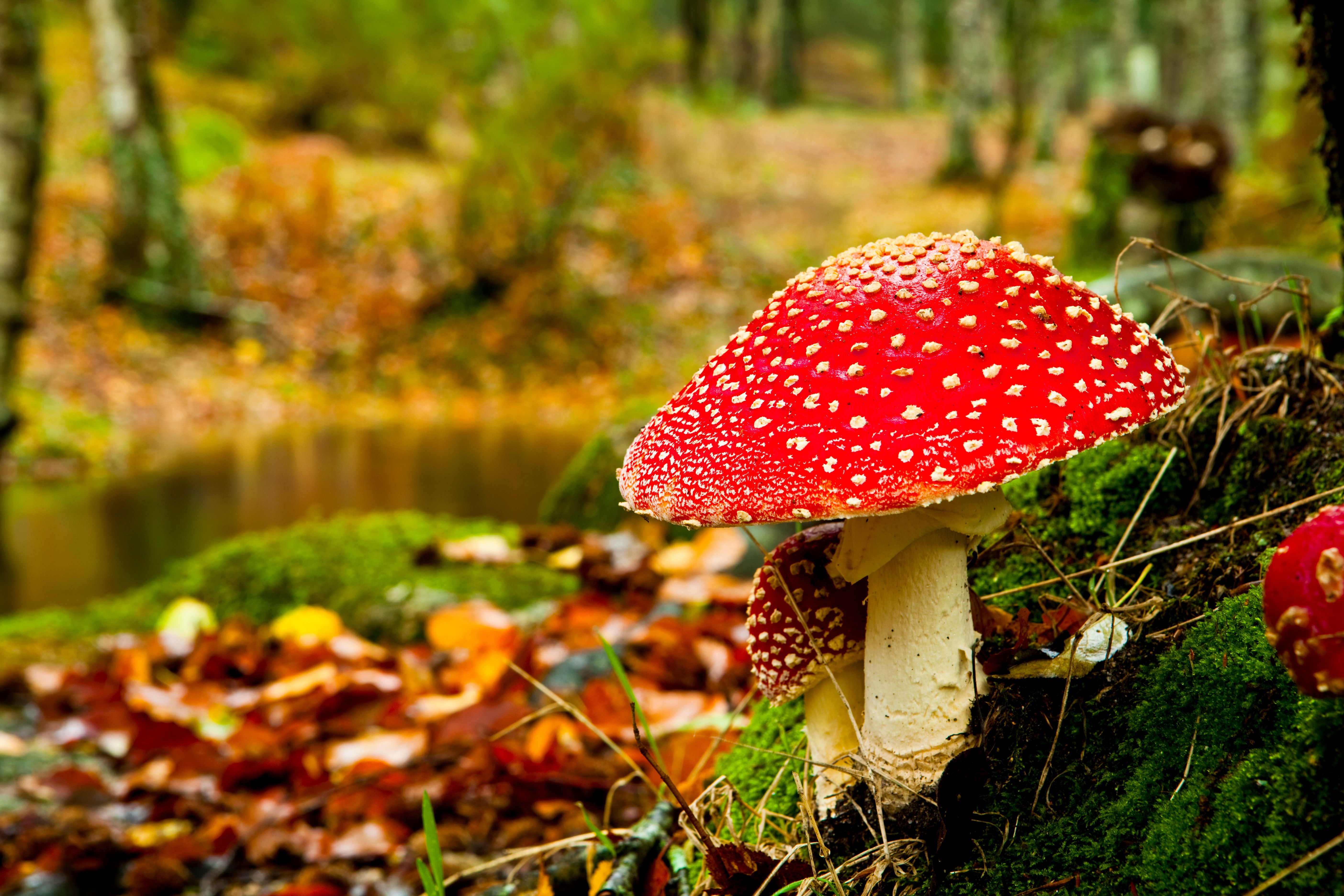Preventing mushroom toxicosis in our companion animals
Identifying signs, understanding mycology, and educating clients help keep pets safe
You walk into your practice and one of your favorite clients calls in a panic: “Gertrude has been vomiting all night!” You can see her at 4 PM. Three o’clock rolls around, and Gertrude’s owner calls to cancel. She has stopped vomiting and is doing better.
Two days later, Gertrude is not doing well. She’s lethargic and weak. Your heart drops as you reach to pet her and notice her mucus membranes are jaundiced. You set to work running bloodwork and starting intravenous (IV) fluids. Her laboratory test results come back with screamingly high liver enzymes. You recommend transferring to a 24-hour care facility to give Gertrude the best chance.
What happened? Gertrude unfortunately got into Amanita mushrooms and has since gone into fulminant liver failure. Let’s look at identifying these toxins and what we can do to prevent illness from them in the future.
Amanita mushrooms. (ikostudio / stock.adobe.com)

With more than 10,000 species of mushrooms estimated in North America and approximately 100 being toxic, identifying each mushroom isn’t realistic.1 Treating each mushroom ingestion as a worst-case scenario may be the best course of action to save your patient’s life. Toxic mushrooms can cause hepatotoxicity, gastrointestinal disease, SLUDGE (saliva, lacrimation, urination, defecation, gastrointestinal signs, and emesis) signs, neurotoxicity, and even nephrotoxicity. In general, mushroom toxicities can have a quick onset or prolonged onset. Although not foolproof, those that have an onset of less than 3 hours typically are self-limiting, while those that have an onset of greater than 6 hours after ingestion tend to be the more life-threatening ones. With no true antidote, decontamination and supportive care are required.2
When working as an emergency veterinarian, I was taught that unless you’re a mycologist, treat a patient for the worst-case scenario, as follows:
- Decontaminate if not clinical— emesis followed by multiple doses of activated charcoal.
- Get a baseline complete blood count/chemistry panel and repeat in 24 hours.
- Run IV fluids for at least 24 hours.
- Provide supportive care (antiemetics, antiseizure medications, etc) and start on S-adenosyl-methionine for 2 weeks.
Knowing where mushrooms are often found is a great way to start. Although toxic mushrooms can be found throughout the United States, we can use what we know about their ecology to help clients identify the higher risks. Mushrooms generally like moist environments with decaying matter and woody debris. Many can be found in spring to fall, but it depends on the climate; some are happy to be out in the winter if the temperature is suitable, like in the Pacific Northwest.3
We know where to look; how do we tell who’s who? Some will be obvious;
for instance, the Amanita muscaria is depicted throughout art as a little red toadstool with white spots. And if your client admits to having psychedelic mushrooms, then maybe your job is a little easier. But for the rest of them? The death cap (Amanita phalloides) and angel of death (Amanita ocreata) both look like white mushrooms. If a client calls about a mushroom exposure, have them bag the fungi in a paper bag wrapped in a moist paper towel (tell them to wash their hands), in case you or a mycologist can identify them, but prepare them for treatment for the worst-case scenario. There is a list of volunteer mycologists on the North American Mycological Association’s website.4 You can also try animal poison control, though they may not have a mycologist available.
What can we do to prevent pets from being exposed in the first place? Educate our clients!
First, we want to prevent exposure in our pet’s environment by eliminating the source. Educate your clients to check their yard for mushrooms weekly and remove them, stem and all. I pair it with instructions to clean up dog waste and ensure that it’s bagged and thrown in the trash to prevent spreading spores. Wash your hands. And please don’t put it in compost.
For hiking, encourage clients to keep pets on a regular leash (not a retractable one) and stick to the middle of the trail so they can watch for any tempting mushrooms. Clients should keep their dogs within sight when off leash. If they live in a high-risk area and their dog likes to eat things, an off leash park may not be a good place for them unless they have a perfect “leave it/drop it” and recall. They could also walk the park to look for potential hazards before letting their dog loose.
If your client has a dog who likes to eat everything on walks, talk to them about muzzle training. Muzzles are a great tool not only for preventing bites but also for preventing dietary indiscretion. Ensure it’s a basket muzzle so the dog can pant, drink, and take treats. I prefer the JAFCO muzzle for this purpose, as they can still pant, drink, and take treats through a centrally placed hole in the front. Check out the Muzzle Up! Project for more information on utilizing muzzles and training dogs to wear them.5
To protect pets from recreational mushrooms, encourage clients to keep their pets in a separate room to avoid any chance of them getting into substances like psilocybin mushrooms. Educate your clients that if their pet is exposed to these, they should contact their veterinarian. Remind them we are not the authorities and want to help their pet.
Finally, let clients know what to do if their pet ingests a mushroom:
- Don’t wait for your pet to get sick before going to the vet.
- Take them before clinical signs occur so they can be decontaminated.
- If it’s too late and clinical signs are present, be prepared to treat for the worst-case scenario.
Utilize your social media and newsletters to send out mushroom education and reminders of what clients should do each season mushrooms sprout in your area to save time in the exam room. Keep mushrooms on your differential list and train your team to ask questions about mushroom exposure for sick patients. And remember, toxic mushrooms can look innocent, so unless you are a mycologist, it may be best to assume the worst.
”A pocket of prevention” is a recurring column brought to you by the American College of Veterinary Preventive Medicine (ACVPM). The ACVPM is an American Veterinary Medical Association-recognized veterinary specialty organization offering board certification in preventive medicine with the option of a specialty in epidemiology. Becoming a diplomate of the ACVPM means joining some of the most distinguished veterinary professionals in preventive medicine and public health at national and international levels. For more information, go to acvpm.org.
References
- Lee J. Mushroom poisoning in dogs. Dr. Justine Lee. Accessed September 15, 2023. https://drjustinelee.com/mushroom-toxicity-dogs-dr-justine-lee/
- Overview of mushrooms toxic to animals. Merck Veterinary Manual. Updated November 2022. Accessed September 15, 2022.
https://www.merckvetmanual.com/toxicology/poisonous-mushrooms/overview-of-mushrooms-toxic-to-animals - Toxicology brief: mushroom poisoning in dogs. dvm360. February 1, 2007. Accessed September 15, 2023. https://www.dvm360.com/view/toxicology-brief-mushroom-poisoning-dogs
- Volunteer identification consultants. North American Mycological Association. 2023. Accessed September 15, 2023.
https://namyco.org/mushroom_poisoning_identifiers.php#top - The Muzzle Up! Project. Accessed September 15, 2023. https://muzzleupproject.com
